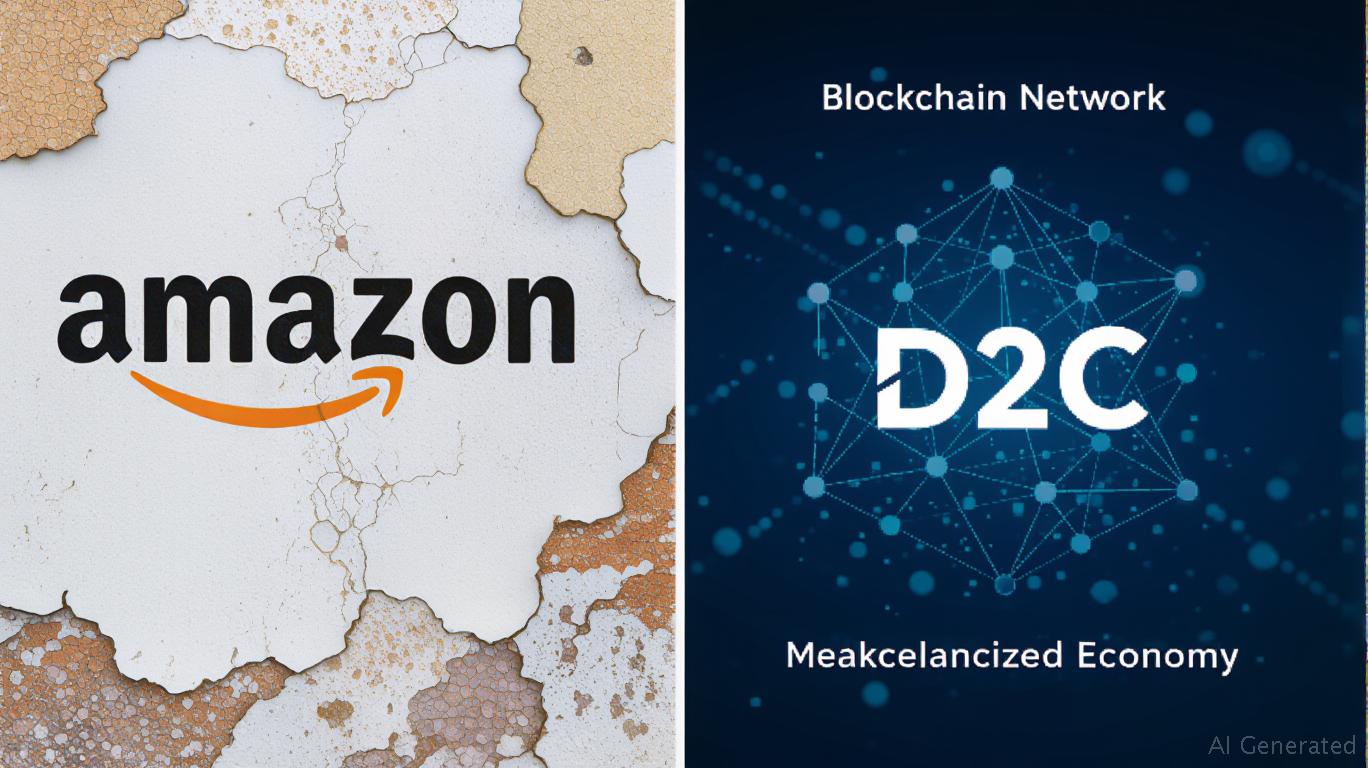Breaking Free: How D2C and Decentralized Tech Are Rewriting the Rules of Value Extraction
The rise of tech giants like
and has created an "enshittification cycle"—a system where platforms extract disproportionate value from businesses and consumers, eroding margins and trust. As frustration with opaque algorithms, data monopolies, and cutthroat pricing grows, opportunities are emerging for companies that reject reliance on these centralized leviathans. This article identifies undervalued firms leveraging direct-to-consumer (D2C) models and decentralized technologies to bypass platform exploitation, positioning them for outsized gains as consumer trust continues its decline.The D2C Revolt: Bypassing the Amazon Tax
The D2C movement is not just a trend—it's a rebellion. By cutting out intermediaries like Amazon, D2C brands retain 40–70% higher margins compared to traditional retailers. Consider Warby Parker (WRBY), which bypasses optical retailers to sell glasses directly to consumers. Its “Buy a Pair, Give a Pair” initiative and carbon-neutral operations have driven $1.3 billion in revenue while avoiding Amazon's 15–20% commission fees.
Warby's revenue grew 45% during the pandemic, yet its stock trades at a P/E ratio of 15x—a 30% discount to the S&P 500. This undervaluation persists despite its 9.65 million organic monthly traffic and 15 million+ pairs donated, underscoring its societal and financial resilience.
Another standout is Allbirds (BIRD), which uses blockchain for supply chain transparency, ensuring its merino wool shoes are ethically sourced. Its $2 billion IPO valuation (2021) and 973,000 monthly visitors highlight a brand that thrives by prioritizing authenticity over Amazon's commoditization.

Decentralized Tech: Escaping the Meta Tax
While D2C brands sidestep Amazon, decentralized technologies are challenging Meta's data dominance. Companies like Reddit (Reddit's stock is not publicly traded, but its Community Points system is blockchain-based) and IBM (IBM) are building platforms where users retain ownership of their data and transactions.
Take IBM's blockchain division, which generates $1.2 billion annually by enabling supply chains like
and Maersk to track goods without relying on Meta's ad ecosystem. IBM's Hyperledger Fabric powers TradeLens, a platform used by 200+ organizations to share shipping data securely—without giving Meta a cut.Meanwhile, Cipher Mining (CIFR) is capitalizing on Bitcoin's decentralized nature to bypass traditional financial gatekeepers. Its Black Pearl data center in Texas, capable of 23.1 EH/s hashrate, generates revenue by mining
directly, avoiding the volatility of Meta's ad revenue.CIFR's stock trades at a 50% discount to its peers despite its $2.8 billion market cap, making it a prime candidate for a valuation reset as Bitcoin stabilizes.
Why Now? The Erosion of Trust and Its Implications
Consumer trust in tech giants is plummeting. A 2024 survey by Pew Research found 68% of Americans distrust Amazon and Meta's handling of personal data, while 52% prefer brands that avoid platform dependencies. This shift benefits companies like Peloton (PTON), which uses direct sales and subscription models to retain $7 billion in annual revenue while Meta's ad-driven fitness apps falter.
Even Hims & Hers Health (HIMS), a telehealth disruptor, avoids Meta's ad ecosystem by focusing on direct patient relationships. Its $253 million in 2023 revenue and 11% keyword-driven traffic growth show how bypassing intermediaries can fuel growth in regulated industries.
Investment Strategy: Buy the Disruptors, Short the Exploiters
The enshittification cycle creates two clear investment vectors:
- D2C Champions with Sustainable Margins
- Warby Parker (WRBY): Buy at $15x P/E, target $25x as margins expand.
Allbirds (BIRD): Underappreciated ESG leader; watch for partnerships in Europe.
Decentralized Infrastructure Plays
- IBM (IBM): Blockchain division is a stealth growth engine; 10% upside potential.
- Cipher Mining (CIFR): Leverage Bitcoin's halving cycle; $8–$10 price target.
Warby's 42% gross margin vs. Amazon's 5% illustrates the profitability of escaping platform fees—a gap that will widen as trust declines.
Conclusion: The Future Belongs to the Self-Reliant
The enshittification cycle is a race to the bottom for platforms extracting value at unsustainable rates. Companies that own their customer relationships and control their data are not just surviving—they're thriving. Investors should focus on firms like Stitch Fix (SFIX) (personalized subscriptions) or Purple (PRPL) (blockchain-tracked mattresses), which trade at 50–70% of their peers' valuations while delivering 10–20% annual revenue growth.
As trust in centralized platforms erodes, these niche disruptors will capture the spoils. Act now—the cycle is turning, and the next wave of winners are already building their moats.


Comments
No comments yet